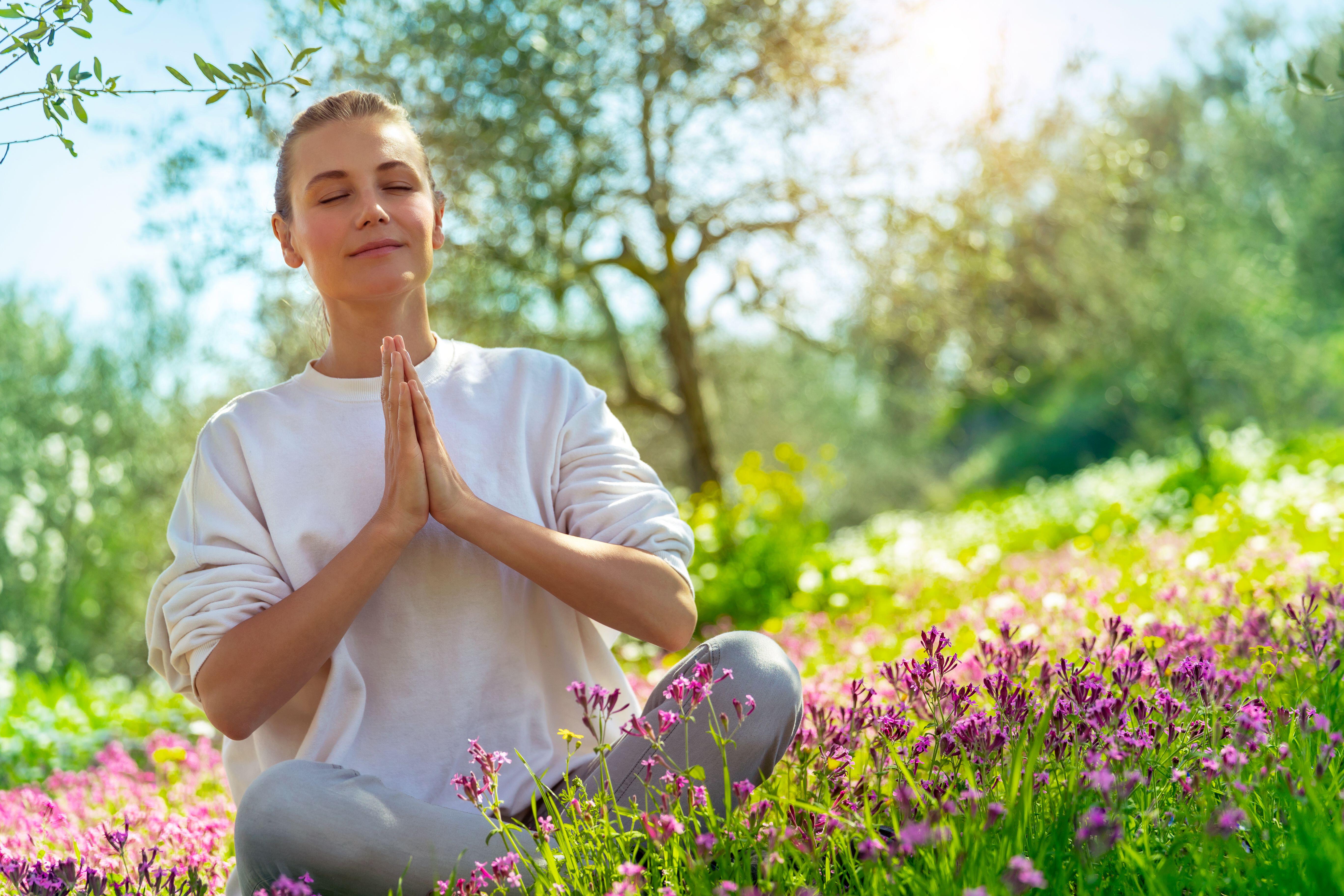7 ways to have a spring wellbeing experience in your garden
Boost your wellbeing by learning to appreciate garden sounds and sights in ways you never did before, says Hannah Stephenson.

Your support helps us to tell the story
From reproductive rights to climate change to Big Tech, The Independent is on the ground when the story is developing. Whether it's investigating the financials of Elon Musk's pro-Trump PAC or producing our latest documentary, 'The A Word', which shines a light on the American women fighting for reproductive rights, we know how important it is to parse out the facts from the messaging.
At such a critical moment in US history, we need reporters on the ground. Your donation allows us to keep sending journalists to speak to both sides of the story.
The Independent is trusted by Americans across the entire political spectrum. And unlike many other quality news outlets, we choose not to lock Americans out of our reporting and analysis with paywalls. We believe quality journalism should be available to everyone, paid for by those who can afford it.
Your support makes all the difference.Walking barefoot on the grass, stopping to appreciate the sights and sounds of your garden or the nature around you, and even hugging trees, can all play a part in our wellbeing.
So says GP Dr Lucy Loveday, an expert in lifestyle medicine, who has teamed up with The Lost Gardens of Heligan in Cornwall (heligan.com) to create an innovative spring wellbeing initiative designed to boost wellbeing and increase positive thoughts.
“Spring is a time of real significance in terms of new beginnings and hope, cultivating a symphony for the senses,” she says, and you can do many of the elements Heligan is suggesting within your own garden.
Here, Loveday offers advice on simple things you can do to feel good…
1. Focus on fractals
Look out for fractals – naturally occurring patterns abundant in nature, in flowers, pine cones, clouds and sea shells, Loveday suggests.
“Look at what’s around you as you connect with nature in whatever space you have available to you, to take in fractals. A pine cone, which has a repetitive pattern that recurs on a progressively finer scale to create shapes of enormous complexity, is a great example,” she explains.
“Noticing the patterns is a great hook to anchor mindfulness practice on, because it brings you into the present moment. You are consciously, deliberately seeking out patterns in the natural environment.”
Those patterns can help us lower our stress levels, she says. Colours can also be good hooks for mindfulness and positivity. “Really draw on the colour of spring blooms, particularly daffodils, rhododendrons, bluebells and magnolias,” she advises.
2. Listen out for garden sounds
“There is evidence that sound has potential restorative effects for wellbeing,” says Loveday. “It can help restore you from a feeling of cognitive fatigue.” Especially she notes, when we are spending so much longer looking at screens because of remote working and connecting with loved ones online.
Recent research by Dr Eleanor Ratcliffe, at the University of Surrey has found that bird sounds in particular can offer relief from mental fatigue and stress. So stand still and listen to the birds, to gently flowing water, or to the sway of leaves in the breeze. “Listen and enjoy the dawn chorus for that sense of waking up and the joy of spring,” Loveday adds.
3. Dip into forest bathing
“There is evidence coming from Japan about the benefits of forest bathing,” notes Loveday. “Familiarise yourself with the trees in your immediate space. They release a chemical called phytoncides, which can have a positive effect on our immune system and mood. Even if you can’t hug each other, you can hug trees.”
4. Peruse pollinators
“Spring is a great time to make your garden a haven for pollinators. Get creative with caterpillar food plants and nectar-rich flowers. The more you grow in your garden, once you’ve invested that bit of effort, you can sit back and enjoy the show – the butterflies, moths and bees,” says Loveday.
“It’s another way of bringing you into the present moment and connecting you with wildlife. And giving back – helping conservation – is very good for humans.”
5. Grow herbs
“From research, we know that botanical scents, such as those of rosemary and mint, have a powerful, emotive influence on us. Rosemary can enhance alertness and quality of memory, reduce anxiety and improve mood,” says Loveday, while “small studies show that peppermint can enhance attention, alertness and performance, and reduces stress.”
6. Walk barefoot on the grass
“Grounding and connecting with your bare feet through the earth can make you feel better,” says Loveday. So start your day by going into the garden and walking barefoot on the grass.
Also known as ‘Earthing’, this can also include walking barefoot on soil, sand or any natural surface, and benefits can include reduced inflammation and improved sleep. Just make sure you only walk where it’s safe to do so and there are no potentially sharp objects underfoot.
Early studies have found the planet has its own natural charge and we seem to do better when we are in direct contact with it, according to experts at Heligan.
7. Take green exercise
“The University of Exeter surveyed around 8,000 people and found that people who spend time in the garden are significantly more likely to report general good health and psychological wellbeing and were 7% more likely to meet activity guidelines than people who didn’t spend time in the garden,” Loveday notes. Other evidence shows that exercising in natural environments can help decrease tension, anger, depression and confusion, and increase energy and positivity.